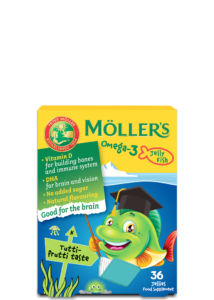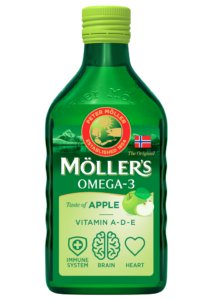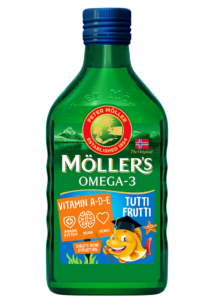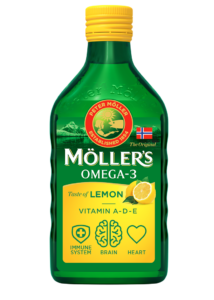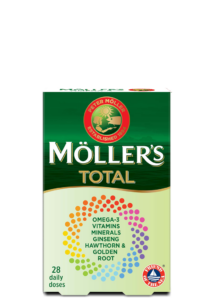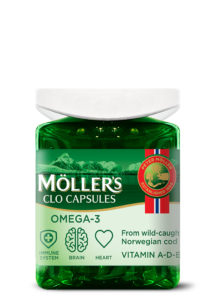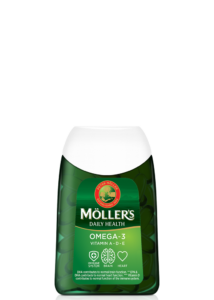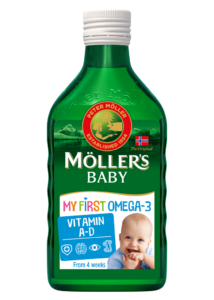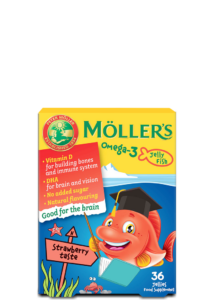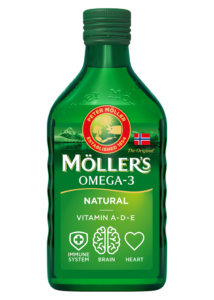Omega-3 is good for the health of your heart, brain and eyes. But since your body doesn’t effectively produce omega-3 by itself, it’s up to you do add it to your diet. That’s why it helps to know the differences between the various omega-3 sources.
Home » Not all omega-3 sources are the same

Typical omega-3 sources
Most people know that oily fish such as salmon, trout, sardines, mackerel, anchovies and herring are good sources of omega-3 – in fact, the very best sources. This is because these fish have the marine long-chain fatty acids known as EPA and DHA, the fatty acids with the best, proven health effects.
Read more articles about omega-3 here
Not just for dinner
Remember that food products such as caviar spread and tinned mackerel in tomato sauce also have a high omega-3 content. You don’t need to get all your fatty acid intake during dinner but can preferably spread it across meals throughout the day. Why not have some caviar spread or a few anchovy fillets on top of an egg for breakfast? And how about a couple of crispbreads with mackerel in tomato sauce for lunch?
Other omega-3 sources
But what if you don’t like fish? Other foods containing omega-3 are walnuts, pumpkin seeds, oils from rapeseeds, flaxseeds, and soya beans. These foods are rich in vegetable short-chain fatty acids called ALA. This is also an omega-3 fatty acid, but it is not as beneficial for the body as the marine fatty acids. The body must convert ALA to EPA and DHA, but only a small amount is converted, and it’s a slow process.
Omega-3 as a supplement
The omega-3 sources are thus limited, which is why many people prefer to take a dietary supplement to ensure they get their daily dose of 250 mg DHA and EPA. But choose supplements with care as there are quality differences here as well. A good quality supplement, like the classic Möller’s Cod Liver Oil, should contain a good amount of the more beneficial marine fatty acids.
What is good health?
Do you have a good lifestyle?
Lifestyle simply means the way in which you live. Health and lifestyle go hand in hand. You might feel you have a good lifestyle if you are physically active, eat healthily and generally experience a sense of wellbeing. Conversely, if you want good health you should also have a good lifestyle.
Physical activity is the major contributor to a good lifestyle, but diet, drugs, stress, sleep and social conditions are also play an important role. Being able to use the body properly to avoid injury also affects lifestyle. Physical activity can also prevent depression and help you to recover more quickly from mental illness, both of which obviously affect your lifestyle.
Diet can be a difficult topic for many. Perhaps you eat too much or too little or maybe you find it hard to know what foods to combine to have a balanced diet. It’s also important to eat food that contains important vitamins, minerals and dietary fibre, omega-3 and antioxidants. On top of all this, you also need to get enough energy, protein and the correct fatty acids. The requirement for these nutrients changes throughout your life. When you are older you also have different requirements than children and younger adults. Women also have different requirements than men. Pregnant and breastfeeding mothers also have special requirements.
When you get older, you lose muscle mass and your body requires less energy and therefore less food. You may lead a less active life than you did before, which is why you require less food. However, your need for minerals, vitamins and other nutrients remains the same. Of course, there are plenty of healthy and active older people, but when you reach 70 to 80 years of age, it’s easier to become ill, especially during flu season.
Some steps you can take to improve your lifestyle and health are to:
- eat a healthy and varied diet
- stay active
- watch your weight
- avoid too much alcohol and don’t smoke
- get enough sleep
- think positive
- practise good hygiene
What is good quality of life?
The World Health Organisation (WHO) defines quality of life as a state where the individual can realise their potential, cope with normal stressful situations, work in a rewarding and positive way, and be able to contribute to others and society.
Quality of life is a wide and somewhat diffuse concept that includes joy in, and a desire for, life. These are values that are rather felt than measured, which in turn are based on personal environment and choices. Quality of life doesn’t necessarily depend on being healthy or sick. It’s the moments between worries, sorrows, problems and ailments that matter. For example, if you have a chronic illness, a feeling of mastery can be important when talking about quality of life.
To sum up, quality of life is a combination of health, lifestyle, networks and social support. It’s about experiencing joy, meaning in life, satisfaction, security and a sense of belonging, as well as being able to use your strengths. It’s also about feeling interest in life, coping with everyday situations and a being committed to something or someone. If you have good quality of life, you will be able to cope better with the inevitable stressful situations in life.
Our products
-
Möller’s Omega-3 Jelly Fish Cola
-
Möller's Omega-3 Jelly Fish Tutti Frutti
-
Möller’s Cod Liver Oil Apple
-
Möller’s Cod Liver Oil Tutti Frutti
-
Möller’s Cod Liver Oil Lemon
-
Möller's Total
-
Möller's Cod liver oil capsules
-
Möller’s Daily Health
-
Möller's My First Omega-3
-
Möller’s Omega-3 Jelly Fish Strawberry
-
Möller’s Cod Liver Oil Natural
Learn more
Exercise program for the elderly
Healthy Aging Healthy Bones
Healthy diet during pregnancy
Brain Healthy Aging
Good health, lifestyle and quality of life – What does it all mean?
Cod Liver Oil Healthy Aging
Get inspiration on our Instagram

